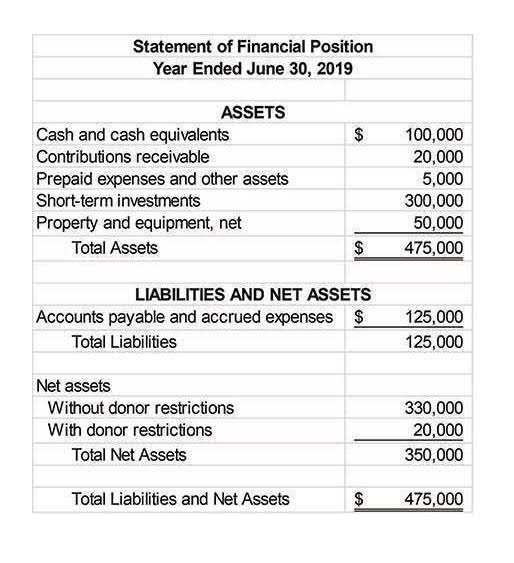Игровой автомат Jacks or better является одним из самых популярных видеопокеров в мире казино. Эта увлекательная игра предоставляет игрокам возможность выиграть крупные призы, собрав комбинации карт, начиная с пары вальтов и лучше.
Quitting Alcohol Timeline
Engaging in regular exercise during recovery alleviates anxiety, depression, and stress, contributing to sustained sobriety. Moreover, adopting a healthier lifestyle and building a supportive social network reinforce long-term recovery efforts. The action stage follows, involving active steps to stop drinking, such as seeking professional help, attending support groups, or adopting new coping strategies. Initially, in the pre-contemplation stage, individuals do not acknowledge their drinking as problematic and do not consider change.
Adopting a balanced lifestyle that includes regular physical activity and healthy nutrition enhances overall well-being and supports sustained recovery. Family intervention helps the family change their behaviors, roles, and perceptions. The changes help their loved one to be held accountable and support the family to stop solving problems for their loved one. The family often believes the loved one is a victim of mental health or a disease of addiction, and they will never accept help from an intervention. It is helpful during this stage for the family to understand the impact of the addiction and mental health both on their loved one and themselves. Not doing an intervention because you think they will say no is a feeble excuse.
The family can and will compromise the growth of the loved one, moving through the stages of change with enabling codependency, fears, anxiety, and unhealthy family roles. Anytime anyone or anything gets in the way of the intended patient seeing the need for change, it stops the forward progress. Families who brag that they don’t do anything to help their loved ones are equally interfering with the stages of change.
Maintenance and Long-Term Sobriety
- During this phase, Revive Health Recovery in Denver provides supportive therapies that can help individuals manage early cognitive challenges.
- This stage is a critical step towards achieving sobriety and lays the foundation for further treatment and rehabilitation.
- Discover how to help someone with drug addiction and navigate treatment options for a path to recovery.
- The most significant determining factor of success at the action and maintenance stage is the reason for going to treatment.
After detox ends, clients begin a rehab program that teaches them how to cope without alcohol and maintain sobriety. Embracing goal clarity can provide direction and motivation, distinguishing between short-term objectives and the broader vision of lifelong sobriety. This clarity supports individuals in making informed decisions that align with their recovery goals. Long-term recovery from alcohol addiction is a sustained process that involves continuous commitment and the implementation of various strategies to maintain sobriety. While the path to long-term sobriety can be challenging, it is achievable with the right support and approach.
Alcohol Recovery Timeline: What To Expect When You Quit Drinking
Although it is monumental getting to this stage, both you and your loved one are in early recovery. It is not uncommon for families to revert to codependency and enabling. Reverting to old behaviors by the family can hinder the 12-step and overall recovery process for their loved one. You may now wonder if they will still love you; we empathize and understand more than you know. There is a change plan at this stage, and now it is about taking action to follow through with the plan.
- When substance users believe they have it all figured out and stop their aftercare in the maintenance phase, they are headed for heartache.
- The family will keep believing in their loved one and themselves, or they will believe in the professionals.
- These stages underline that recovery is a non-linear journey, where individuals may cycle back to earlier stages as they navigate the complexities of their addiction.
- Whether you’re considering quitting alcohol, actively in treatment, or looking to sustain sobriety, knowing what to expect at each stage can improve your chances of long-term success.
- When someone is in pre-contemplation, there is a lack of awareness or denial of the addiction or mental health problem.
It is important to know the signs that develop during each stage to ensure your loved one seeks treatment for their addiction early on. The earlier they seek treatment, the better their chance of successful recovery. Doing a cost-benefit analysis to weigh the benefits of alcohol use against the cons and costs can sometimes help a person find clarity at this stage. Individuals may waffle back and forth between wanting and not wanting to change. They may decide, for instance, that they’re going to seek treatment sometime in the next six months but won’t set a definite date.
Interventions Can Help Move Families and Their Loved Ones Through the Stages of Change
When a family or their loved one takes action, there is a change taking place that can be noticeable. The change often occurs when actively engaged in intervention, treatment, and family recovery. In other words, help is required for families and people with a substance use or mental disorder to address the behaviors. Some family members struggle with believing the severity of the loved one’s addiction and mental health disorders. Mental block, codependency, and unhealthy and dysfunctional family roles are significant contributors to this struggle. An enabler in the family system may selfishly deny the severity of the problem to feed a hidden agenda of not wanting to lose their role as caretakers or having a purpose.
Person-Centered Care for Substance-Use Treatment
The length of the alcohol detox timeline varies widely depending on individual factors such as the person’s level of dependence, physical health, and presence of other medical or mental health conditions. Typically, the most intense phase of detox lasts up to a week, but withdrawal symptoms may linger for weeks or even months in some cases. Once acute withdrawal symptoms subside, many individuals enter the post-acute withdrawal phase. This stage can last several weeks and is marked by lingering symptoms such as anxiety, sleep disturbances, mood swings, and difficulty concentrating. While these symptoms are generally less severe than those experienced during the initial detox phase, they can still pose challenges and increase the risk of relapse.
How Long is the Alcohol Detox Timeline?
In 2020, more than 40.3 million people in the United States struggled with Substance Use Disorder (SUD). For every individual battling it, there are circles of friends, family members, and whole communities that feel its impact. Rehab is not just about stopping alcohol, it’s about making sure you stay supported long after the last drink. Infused with a naturally warm and empathetic demeanor, Kathryn leverages her enduring enthusiasm for behavioral health and diverse therapeutic modalities in the realm of recovery.
The whole picture is important, and just as important is what pathways of recovery they think will work for them. Meir carries forward a legacy of dedication from generations of medical professionals and educators as he guides the Wellbrook Recovery team. His journey began years ago when he assumed a leadership role in an addiction treatment program, igniting a profound passion for mental health and addiction recovery that continues to shape his life. No, alcohol recovery does not necessarily require complete abstinence for all individuals.
Explore vibrant alternatives to drinking alcohol, redefine your lifestyle, and thrive in sobriety. Explore effective cures for heroin addiction, from therapies to support systems for lasting recovery. Discover its effectiveness and applications for positive treatment outcomes. Dive into average age of substance abuse statistics, understanding onset, gender differences, and prevention. Both perspectives highlight the interconnectedness of personal circumstances and the recovery process, emphasizing the necessity of tailored support systems. Additionally, the Hierarchy of Needs Perspective emphasizes the importance of addressing basic needs before achieving self-actualization.
Professional treatment significantly boosts the success rate of recovery. Entering a structured program allows individuals to work through detox in a controlled environment, ensuring the best management of withdrawal symptoms. Furthermore, therapeutic sessions provide tools to cope with addiction and self-destructive behaviors. In the action stage, the focus is on actively changing behavior to overcome addiction.
This can be a harsh realization because it involves admitting something very personal and painful. A strong support system can be a powerful force in helping someone maintain sobriety, but recovery is ultimately their journey. Offering consistent encouragement while respecting their independence allows them to regain control over their life. Scientific research underscores the effectiveness of these treatments.
Once he or she has determined a course of action, they’re ready for the next step. At the three-to-six-month mark, the brain continues to show progress in healing damaged neural pathways. Neuroplasticity—the brain’s ability to reorganize itself and form new connections—plays a major role in this phase, enabling individuals to gradually regain more complex cognitive functions. Memory recall, reasoning abilities, and executive functions often improve, but they may still fluctuate as the brain adjusts.
Our personalized addiction treatment programs apply evidence-based treatment with compassion for you and your specific needs. Sustained sobriety is the ultimate goal of any addiction treatment program. Achieving this takes hard work, and it’s not always clear how to do it. These five tips will help you or someone you care about stay sober during each of the stages of recovery. During the maintenance phase, a recovering alcoholic applies the tools they learned in treatment and enjoys the benefits of being sober.
While the physical craving for alcohol is reduced through medical intervention, and psychological dependence is managed with therapy, the potential for relapse remains a concern throughout a person’s life. Long-term sobriety requires continuous commitment and management, and some face challenges with triggers, cravings, or stress that lead to a relapse. The evaluations that support alcohol recovery include comprehensive assessments conducted by medical and mental health professionals to identify the severity of addiction and any co-occurring disorders. These evaluations involve clinical interviews, physical exams, psychological screenings, and lab tests. Tools like the AUDIT (Alcohol Use Disorders Identification Test) and DSM-5 diagnostic checklists help inform treatment planning and track recovery progress. A study “Relapse by alcohol abusers” by R W Pickens, et al., published by NIH, indicates that a significant proportion of individuals experience a return alcoholism recovery stages to alcohol use after attempting to maintain sobriety.
12 Best Supplements for Alcohol Recovery

The first step in treating addiction to any substance is to remove all traces of the substance from the body. Unfortunately, many people attempt to quit drugs or alcohol on their own, which almost never works. No matter what the substance or the person’s history of abusing it, the withdrawal phase is where most people fail when trying to fight addiction alone. While the body can withstand malnutrition for weeks, if not longer, dehydration quickly becomes a matter of life or death.

Diet for Recovering Alcoholics
If you had two to three drinks, it typically takes about two to three hours for a healthy liver to process and eliminate the alcohol from the system. Alcohol can cause malnutrition, malabsorption, and increased urinary excretion of the vitamin, leading to vitamin C deficiency.9 This deficiency can cause you to feel tired, irritable, and weak. Severe deficiency, called scurvy, may result in anemia, bruising, and dental issues.

How Intensive Outpatient Intensity Structure Helps Recovery
- Replenish and restore with nutrient-rich powerhouses to support your recovery.
- But food high in sodium can lead to a variety of health problems, including weight gain, high cholesterol, and blood pressure.
- Sulforaphane helps fight off infectious cells, cancer-inducing chemicals, and boosts the liver’s ability to regulate chemical levels in the body.
- But one often-overlooked aspect of beating addiction is nutrition in recovery.
- A healthy diet, complete with supplements recommended by your doctor, can go a long way toward restoring normal body function.
Alcohol withdrawal symptoms can begin as early as six hours after the last drink, or as late as 24 hours after the last drink. For most people, withdrawal symptoms begin tapering off between days five and seven, and often last no longer than 10 days. As you’ve likely noticed, alcohol can provide temporary feelings of happiness and relaxation. Studies show that sugar consumption also triggers euphoric feelings, which may help fill that gap. Milk thistle is essential for those with cirrhosis and alcohol-induced fatty liver. It can improve liver function and protect the liver from various toxins.
- With prolonged alcohol use, your body can come to rely on alcohol to feel good, and crave the boost in feel good chemicals.
- Every individual has different nutritional needs that can impact their experience in treatment, which is why we work hard to provide customized treatment plans that address nutrition.
- It has long been used as a traditional remedy for a variety of illnesses, including liver damage.
- Some of the most common withdrawal symptoms include anxiety, nausea, insomnia, and shakes.
- Many drinks like soda, sweetened teas, iced coffees, and fruit juices contain lots of added sugars.
- Cirrhosis is unfortunately irreversible, though you can slow its progress by ceasing alcohol consumption and eating an anti-inflammatory diet.
- Some detox centers even offer nutritional therapy so you or your loved one can consume superfoods to complement alcohol detox treatment.
The Three Krokodil Effects Exposed
If liver damage occurs due to medication or drug use, the time required for recovery can vary widely. Mild damage may heal within a few weeks after discontinuing the drug, while more severe damage, such as drug-induced hepatitis, may require months of treatment and monitoring. Despite the booming detox industry, clinical evidence supporting the effectiveness of these diets is scarce. Read on to explore the science behind liver detoxification and discover what works. Deficiency in vitamin B3, or niacin, is also common in heavy drinkers.

Other Beneficial Foods for Alcohol Detox
Hydration is important for everyone, regardless of history of substance abuse. Even if water hasn’t been a big part of your life before, make sure it is now. Flavor packets or flavored seltzer water can make this easier for those adjusting to increased intake or who don’t yet have a taste for water. During the recovery stage, it’s not uncommon to feel temporarily worse. For some people, AUD has hurt their relationships, careers, health, finances, self-esteem, and other aspects of their lives. Your body has acclimated to quitting drinking over the past couple of years.
You deserve excellent care and a rewarding life in recovery.
Alcohol can not only alter your brain chemistry, but it can negatively affect your nutrition as well. In fact, alcohol is known to prevent the body from absorbing and using the nutrients gained from foods. Without these key nutrients, you not only risk succumbing to various physical ailments, but you can also struggle to think clearly and act quickly. Worse, even if you begin an exercise regimen, this phenomenon can limit your muscle growth, making exercising more complex and less effective. If you have health insurance, call the number on the back of your card to ask about your mental health and substance abuse coverage.
Table of Content
Chicken, turkey, soy and pumpkin seeds are good sources of amino acids. Early in recovery, your body will need to readjust to the feeling of hunger. That’s why it’s important to eat three meals best foods for alcohol recovery a day plus snacks as your body heals. If you don’t feel hungry, think about taking nutritional supplements. Without it, you can have strong cravings, mood swings, and hostile behavior.
- Experts suggest a diet with lots of complex carbs like whole grains, veggies, peas, and beans.
- Some of the most common recipes that include cayenne pepper are vegetable soup, spicy marinades, chili sauce, and Indian curry.
- You’ll need to be especially careful not to replace alcohol with sugar or caffeine.
- After stopping stimulants, it’s common to experience a strong spike in appetite — which may lead to overeating — that can overwhelm the weakened digestive system.
Робота: middle frontend developer дистанційно Вакансії і робота
Розкажіть про себе і ми підберемо для вас найкращі вакансії, які відповідають вашим навичкам, досвіду та побажанням. Може варто ефективна система мотивації задонатити, почати розмовляти Вакансія Middle Frontend (React) Developer українською або допомогти іншим? Пам’ять не пасивна — це активна участь у спільній боротьбі за майбутнє.
- Розкажіть про себе і ми підберемо для вас найкращі вакансії, які відповідають вашим навичкам, досвіду та побажанням.
- Пам’ять не пасивна — це активна участь у спільній боротьбі за майбутнє.
- Пам’ять не пасивна — це активна участь у спільній боротьбі за майбутнє.
- Може варто задонатити, почати розмовляти українською або допомогти іншим?
Accounting for the Cost of Making Wine

Industry consolidation, competition, direct-to-consumer sales strategies, and risks around smoke exposure and climate change are rapidly shifting the wine industry landscape. With thoughtful use of classes and tags, you’ll gain an unprecedented understanding of what drives your winery’s financial success. Classes and tags in QuickBooks Online (QBO) accounting software give you X-ray vision into your winery’s finances.

Accounting for Vineyards and Wineries

Using the simplified method referenced above, assume that the inventory costs are $800,000 at December 31, 2017. Qualified wineries are able to change to these methods effective for tax years beginning in 2018. When adopting these methods, taxpayers are required to recalculate their inventory as of the end of the prior tax year under retained earnings the new, simplified method.
Managing Production Accounts
Limited production wineries—those producing fewer than 1,000 cases annually—accounted for 44% of US wineries in July 2019, according to Wines & Vines Analytics. The chart below lists expenditures that are commonly considered winemaking costs and some that aren’t. In some cases, certain expenditures may or may not be classified as winemaking costs; it really depends on the situation. This method is often used in more basic costing models and for smaller wineries; however, it can still be used in more complex costing models of larger wineries. This method values inventory based on the average cost of all similar items available during the period. When costs aren’t easy to trace, it may be preferred to use an average, weighted average, or other ratio for applying costs.
- This method allocates overhead costs based on the actual activities that drive those costs, rather than simply spreading them evenly across all products.
- In short, this course is an essential desk reference for anyone engaged in the accounting for a vineyard or winery.
- This metric provides insight into how effectively a winery is managing its production costs relative to its sales, offering a clear picture of profitability.
- By accurately categorizing these costs, vineyard managers can gain a clearer picture of where their money is going and identify potential areas for cost reduction.
- It all hinges on the winery’s cost structure–depending on what costs are fixed as opposed to variable.
- This revenue is then distributed to the shareholders, who tend to be the same individuals or entities that own the exporter, as qualified dividends.
- This can be particularly for true smaller wineries, given how crowded and competitive the market is.
Financial reporting
This approach can be beneficial in times of rising costs, as it matches older, potentially cheaper costs against current revenues, thereby inflating profit margins. Understanding the winemaking process is necessary to appreciate the industry’s unique accounting, tax, and business risk issues. Although all wineries produce wine, not all wineries raise the grapes used to produce that wine.
Major categories of winery costs
This irregularity necessitates a strategic approach to cash flow management to ensure that operations remain smooth and uninterrupted. It’s important to note that the requirement to use ADS will apply to all vineyard or farming assets for a specific taxpayer who’s elected to expense their pre-productive farming costs. For example, a taxpayer who capitalizes pre-productive costs would depreciate vines over a 10-year life. However, a taxpayer who expenses pre-productive costs would accounting for vineyards and wineries depreciate vines over a 20-year life.
Business Advisory for Wineries and Vineyards

Your winery’s profitability is driven by two things–what you can charge for your wine and what it costs to make and sell it. This is a fairly complicated calculation, so the wineries want to limit it to just two types of inventory, which are bulk wine and cased goods. Given the high dollar value of many bottles of wine, it is not a surprise that many asset misappropriation schemes in the wine industry involve inventory theft. Another important metric is the operating expense ratio, which compares operating expenses to total revenue. This ratio helps wineries identify areas where they might be overspending and where cost-saving measures could be implemented.
To understand these costs, determine how much product will be sold in each channel and at what price(s). While your DTC gross profit margins are typically more attractive, the additional infrastructure and staffing required to sell DTC can offset the apparent benefits. Increasing production requires a winery to periodically incur significant investments in equipment and facilities to achieve necessary production capacity. These periodic investments in such fixed assets require careful cash flow planning and can increase the cost per case of production—at least until the production volume grows sufficiently to deliver greater economies of scale. Wineries should take into account how these additional fixed asset acquisitions will impact the depreciation expense, a production cost that will ultimately impact COGS. Small winery owners often choose to forgo the detailed, https://www.bookstime.com/blog/how-to-do-bookkeeping-for-cleaning-businesses accounting principles generally accepted in the United States of America (U.S. GAAP) based-inventory costing COGS processes because their books are often kept on a tax basis.
- If the production facility uses considerably more of the utilities than other portions of the facility, the allocation percentage can be adjusted.
- Tracking your performance using these numbers is vital to maintaining and expanding a profitable business.
- The process of applying overhead costs should evolve over time as operations become more complex, and so too should the allocation methodology—without negatively impacting consistency.
- It is easy for owners to get caught up in the romance and poetry of wine and overlook the fact that growing grapes and making wine is, at its heart, a multifaceted agricultural business with complex tax issues and unique business risks.
Indirect costs, on the other hand, include overhead expenses like equipment depreciation, property taxes, and administrative salaries. By accurately categorizing these costs, vineyard managers can gain a clearer picture of where their money is going and identify potential areas for cost reduction. Given that a taxpayer’s method of accounting for pre-productive costs will impact their ability to take bonus depreciation, it’s important for a taxpayer to understand his or her method of accounting for pre-productive costs.

Opportunities for CPAs within the Wine Industry
- And finally, the bottles are left in storage for a period of months for further aging.
- Now, let’s explore a concept that can significantly improve your financial insights — managing production accounts.
- To keep your business moving forward, you need proactive strategies across your operations—from tax planning to sales and distribution, business transition, and acquisition and exit planning.
- One commonly used method is First-In, First-Out (FIFO), which assumes that the oldest inventory items are sold first.
- For example, if a pass-through winery with one owner generates $500,000 in taxable income and all of that income is considered QBI, its owner could be eligible for a $100,000—or 20%—deduction.
This is a depletion of a distributor’s inventory, which is where the name comes from. It’s a good idea to get advice in the early stages of the vine lifecycle to ensure that there are no unexpected tax implications.
